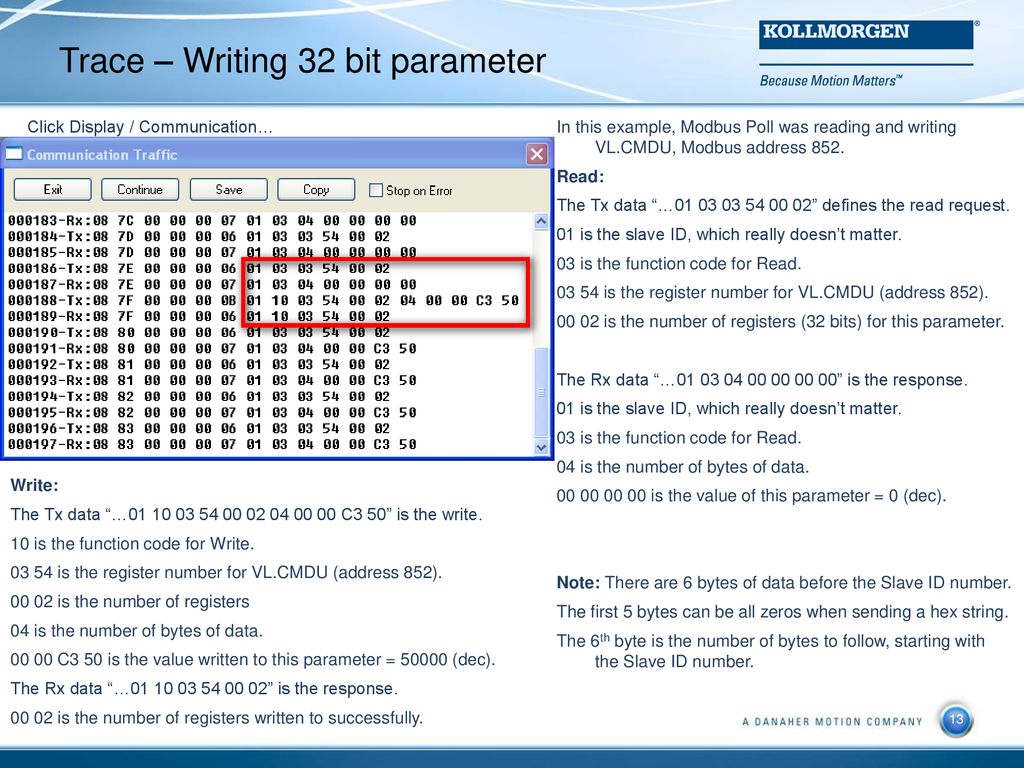
- #Modbus poll to ip address series
- #Modbus poll to ip address download
NOTE: There are different implementations of TCP/IP Modbus protocol among vendors. Set up your Modbus host to poll the "P2P-Concentrator" RediGate using the IP address configured in your device, on the interface that you opened in the Firewall (above).
After loading configurations to both RediGates, test that you are seeing MQTT subscriptions.įrom the Main Menu, select 3 (Diagnostic Services), and 17 (MQTT Status). Save changes to the P2P-Concentrator configuration and upload it to the second RediGate. This Firewall setting is necessary to allow the Modbus host to have access for polling the RediGate over a network interface. Interface name should be the same as your AWS configuration, eth0 or eth1 for Ethernet or ppp0 for cellular. (Should also have INPUT Chain, tcp packets, and ACCEPT Packet.) Under Networks, select Firewall, then click the Edit Table button for Port Management.Ĭlick the Append End button twice, and modify the last two rows to have Dest Port 5. SlaveModbus TCP0 and SlaveNetwork1 (paste under Slave Channels). 
Copy and paste the following objects from the Elecsys-P2P-Demo-Concentrator.xml config into your P2P-Concentrator.xml configuration:.
#Modbus poll to ip address download
Download Elecsys-P2P-Demo-Concentrator.xml from the site (Peer-to-Peer example) and open it within the same ACE window. Right-click on Master Channels and select Delete Node to delete the Master Channels object from the original AWS demo. (Comment: Subscribe to the publish topic of the field RediGate.) Make sure the MQTT Client → Client ID is: $ to +):. Save the configuration as P2P-Field1.xml. Set up a RediGate demo to AWS using this tutorial: RediGate to AWS IoT.įor the System → Unit Name, use "P2P-Field1". AWS account with the AWS IoT service enabled ( ). Completion of the Getting Started Guide and RediGate to AWS IoT for your respective RediGate device ( RediGate 100 Series or RediGate 400 Series). #Modbus poll to ip address series
Two RediGate 100 or 400 series device with internet connectivity. 
With some adaptation, it may also be used for sharing data in a point-to-multipoint arrangement. This example illustrates the ability of the RediGate to serve as a cellular replacement for two sites using point-to-point radios for communication. In this example, the two sites are called "Remote Data Publisher" and "Local Data Concentrator" for identification purposes only. (You could use a similar configuration to a generic MQTT broker, but note that because of MQTT topic restrictions, there may be additional requirements to make the Peer-to-peer application work properly on some platforms, such as IBM or Azure IoT.) This tutorial uses two RediGates with Internet connectivity to the AWS IoT service.

The second part of the example will show command data going from the Modbus host to the field RediGate. In this tutorial, we will be demonstrating the ability of the RediGate to subscribe to topics published by another RediGate in JSON data format, and serve that data up to a Modbus TCP host.







 0 kommentar(er)
0 kommentar(er)
